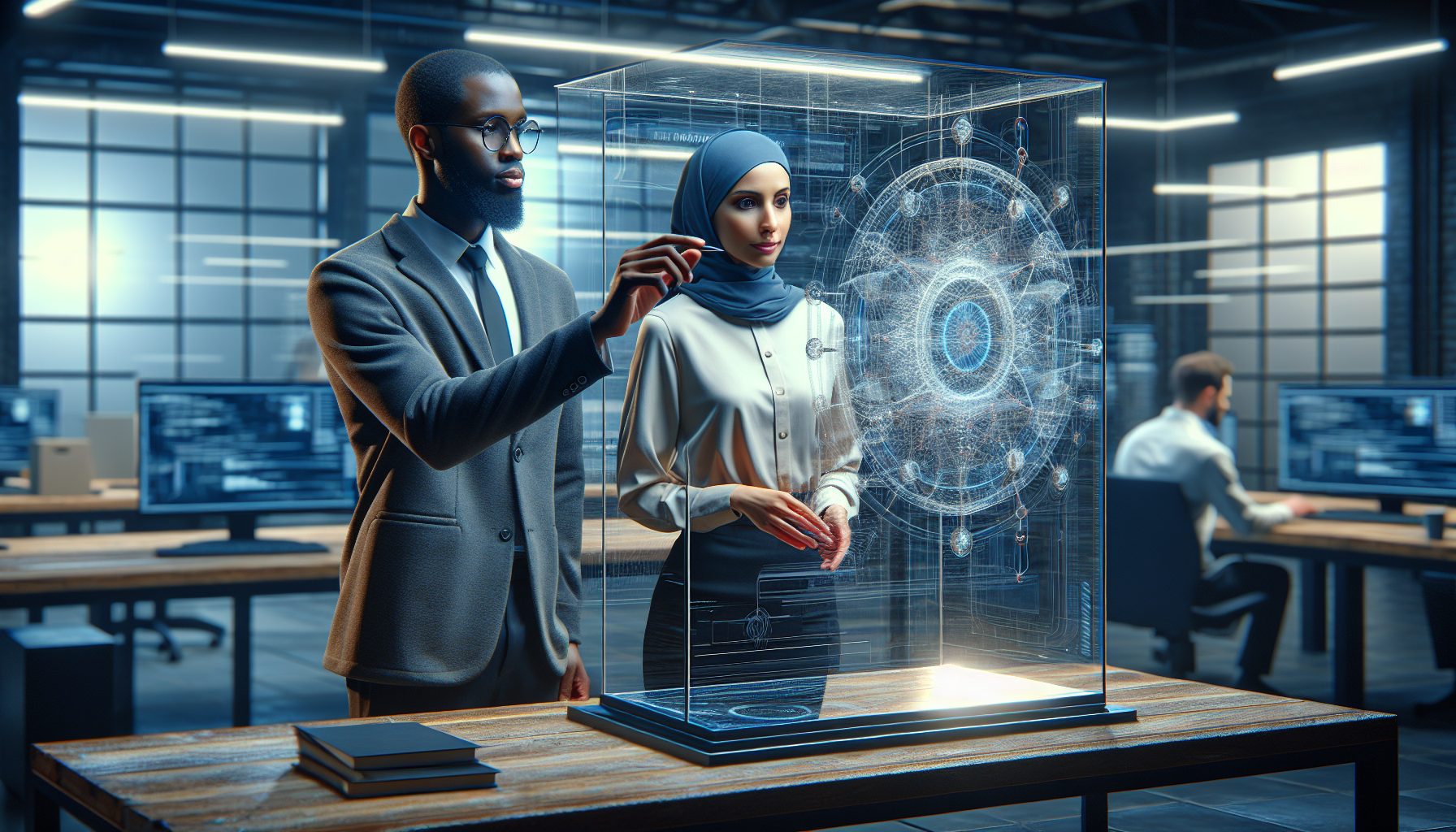Table of Contents
Understanding the Integration of AI in DevSecOps

Key Points
- Enhanced Efficiency: AI technologies streamline DevSecOps processes, significantly reducing the time required for threat detection and response.
- Proactive Security Measures: AI enables the early identification of potential security threats, allowing for timely interventions.
- Automation of Routine Tasks: AI automates repetitive security tasks, freeing up human resources for more complex problem-solving.
- Improved Accuracy: Machine learning algorithms help reduce false positives in threat detection, improving the overall accuracy of security operations.
- Scalability: AI solutions can scale with the growing data and security needs of an organization, providing sustainable security enhancements.
Definition and Scope
The integration of AI in DevSecOps refers to the use of artificial intelligence to enhance the security and efficiency of DevSecOps practices.
AI technologies, such as machine learning and natural language processing, are employed to automate and improve threat detection, security testing, and incident response within the DevSecOps framework.
DevSecOps, which stands for Development, Security, and Operations, integrates security practices within the DevOps process. The goal is to build security into the software development lifecycle from the start rather than treating it as an afterthought. This integration is crucial for minimizing vulnerabilities and ensuring the rapid deployment of secure and reliable software.
Technological Components
AI in DevSecOps utilizes various technologies to enhance security protocols. Machine learning algorithms are trained on historical data to identify patterns and predict potential security threats. Natural language processing is used to analyze code and detect vulnerabilities by understanding the context within the software’s text.
Additionally, AI-driven automation tools are implemented to handle routine security tasks, such as scanning for vulnerabilities, monitoring network traffic, and responding to security incidents. These tools help reduce the workload on human security teams and increase the speed and accuracy of security operations.
Challenges in Protecting Digital Advertising Ecosystems

Complexity of Threats
The digital advertising ecosystem faces a unique set of challenges, primarily due to the complexity and dynamism of its environment. Advertisers and publishers use sophisticated technologies to target and deliver content, creating multiple points of vulnerability. Cyber threats such as ad fraud, data breaches, and malware distribution are prevalent, exploiting these vulnerabilities.
The integration of user data for personalized advertising further complicates security efforts, as it involves the collection, storage, and processing of large volumes of sensitive information. Protecting this data against unauthorized access and ensuring privacy compliance is a significant challenge for IT managers and security teams.
Regulatory Compliance
Another major challenge is adhering to stringent regulatory requirements. Laws and regulations such as the General Data Protection Regulation (GDPR) in Europe and the California Consumer Privacy Act (CCPA) in the United States impose strict guidelines on data privacy and security. Non-compliance can result in hefty fines and damage to reputation.
Ensuring compliance requires continuous monitoring and updating of security practices to align with evolving legal standards. This is particularly challenging in the fast-paced digital advertising sector, where technological advancements can quickly outpace regulatory frameworks.
Implementing AI for Enhanced Security in Digital Advertising

Step 1: Data Protection
The first step in leveraging AI to enhance security in digital advertising is to implement robust data protection measures. AI algorithms can encrypt sensitive user data, ensuring that it remains secure during storage and transmission. Additionally, AI can monitor access patterns to detect and prevent unauthorized data breaches.
Step 2: Real-Time Threat Detection
AI technologies enable real-time threat detection, which is crucial for the dynamic digital advertising environment. Machine learning models can analyze traffic and user behavior to identify anomalies that may indicate a security threat, such as unusual access requests or patterns of data movement that resemble data exfiltration.
Step 3: Automated Compliance Checks
To address the challenge of regulatory compliance, AI can be employed to automate the compliance monitoring process. AI systems can scan and analyze advertising campaigns and data handling practices to ensure they meet legal standards, providing alerts when potential non-compliance issues are detected.
Step 4: Continuous Learning and Adaptation
Finally, AI systems in DevSecOps need to continuously learn and adapt to new threats and regulatory changes. Machine learning algorithms can be retrained on new data and modified to reflect updated compliance requirements, ensuring that the security measures remain effective over time.
Frequently Asked Questions

How does AI improve threat detection in DevSecOps?
AI enhances threat detection by analyzing vast amounts of data to identify patterns and anomalies that may indicate a security threat. This allows for faster and more accurate detection compared to traditional methods.
What are the benefits of integrating AI into DevSecOps?
Integrating AI into DevSecOps offers several benefits, including improved efficiency, enhanced threat detection accuracy, automation of routine tasks, and the ability to scale security measures as the organization grows.
Can AI in DevSecOps help with regulatory compliance?
Yes, AI can significantly aid in regulatory compliance by automating the monitoring and reporting processes, ensuring that digital advertising practices adhere to relevant laws and regulations.
What challenges does AI face in DevSecOps?
Challenges include the need for high-quality data to train AI models, the complexity of integrating AI with existing security infrastructure, and the ongoing requirement to update AI systems in response to evolving threats and regulations.
Predictions for the Future of AI in DevSecOps

As AI technologies continue to evolve, their integration into DevSecOps is expected to deepen, offering new ways to enhance security and operational efficiency. Here are five predictions for the future of AI in DevSecOps:
- Increased Automation: AI will automate more complex and decision-making security tasks, reducing the need for human intervention and allowing security teams to focus on strategic initiatives.
- Enhanced Personalization: AI will enable more personalized security measures, tailoring protections based on individual user behavior and risk profiles.
- Greater Integration with IoT: As IoT devices become more prevalent, AI will play a crucial role in securing these devices within DevSecOps frameworks.
- Advancements in Predictive Security: AI’s predictive capabilities will become more advanced, allowing for anticipatory security measures that can prevent threats before they materialize.
- Focus on Ethical AI: There will be a greater emphasis on developing and implementing ethical AI practices to ensure privacy and fairness in automated security decisions.
References
- AI/ML in DevSecOps Series – GitLab
- AI for DevSecOps is AI the Future | VerSprite
- Generative AI in DevSecOps. Introduction | by Bijit Ghosh | Medium
- Unleashing the Power of AI-Engineered DevSecOps – DevOps.com
- AI in DevSecOps: Must Read for 2024 – Practical DevSecOps
Disclaimer
This article is AI-generated for educational purposes and does not intend to give advice or recommend its implementation. It aims to inspire readers to research and delve deeper into the topics covered.
- From SaaS to AI Agents - 05/27/25
- The AI Automation Engineer - 05/13/25
- Hire One Developer to Press One Key - 05/06/25